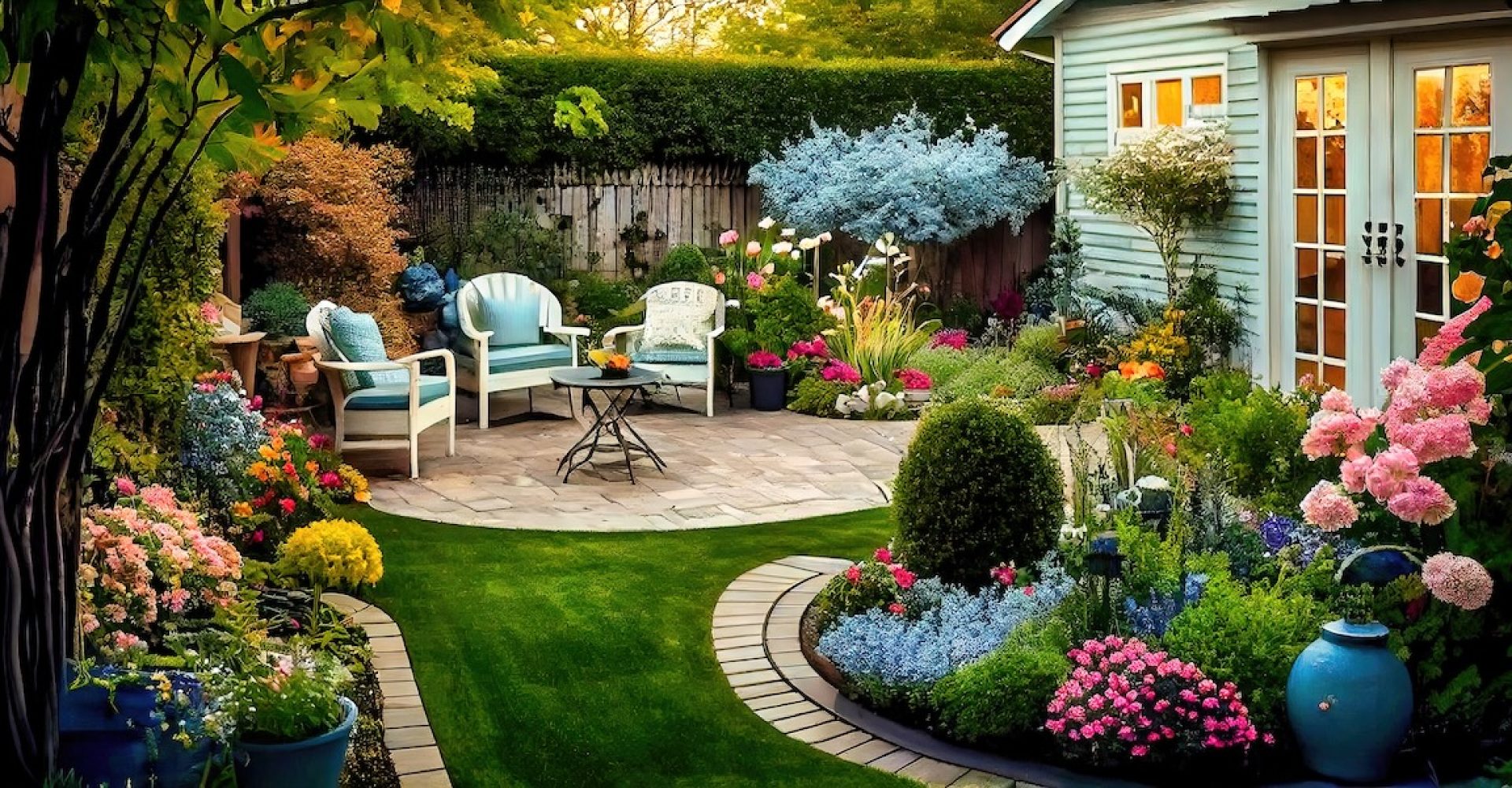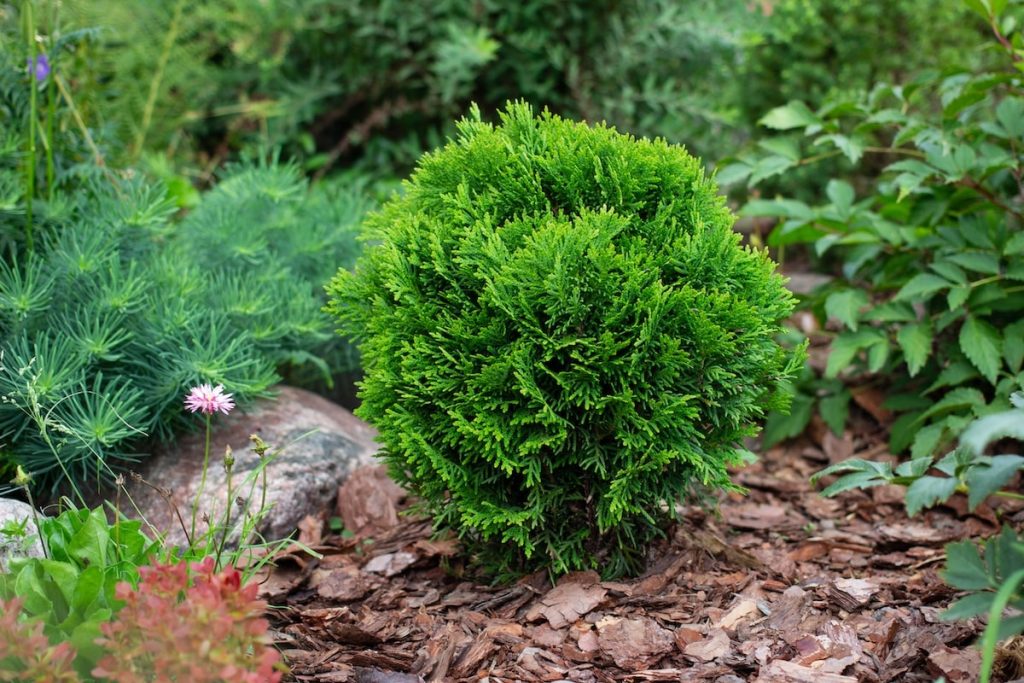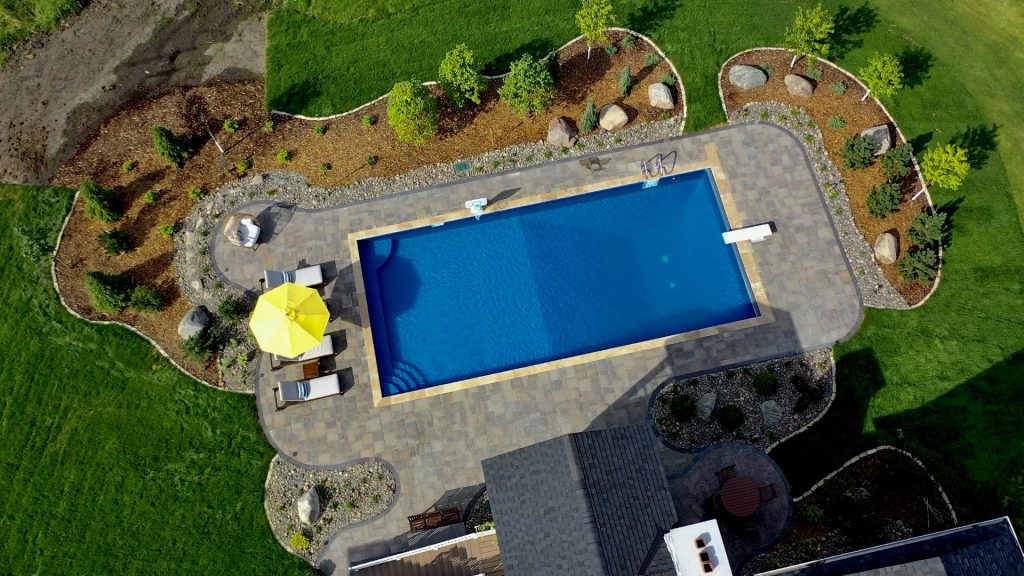
One of the joys of homeownership is having an outdoor space where you can relax, entertain, and enjoy. One of the not so joyful aspects of homeownership is maintaining that outdoor space. This is where low-maintenance landscaping comes in, allowing you the joys of having an outdoor space with less upkeep. Opting for a low-maintenance backyard does not only give you more time to relax, it is also an eco-friendly option where you spend less time and money on upkeep and more on enjoyment.
By investing in a few key elements of low-maintenance landscaping, like plant choices, hardscaping, and smart upkeep strategies, you can be well on your way to having a low-maintenance backyard oasis to enjoy for years to come.
Low-maintenance landscaping means planning your garden and backyard space with an eye towards choosing plants and hardscape elements that require less maintenance. It often means making choices that allow nature to give a helping hand in keeping your garden looking good.
One of the first backyard planning tips is defining your vision, which starts with figuring out what you want to use your backyard for. Creating backyard entertaining spaces primarily for adults requires different choices than one that incorporates a child’s play area or one meant to be a lush relaxing paradise. Defining your vision will help you incorporate easy landscaping ideas that fit that vision.
Not every backyard is the same. One important tip for sustainable landscaping is assessing your space so you can make choices that fit your site. In your assessment look at:
Every home improvement project requires a budget and creating a low-maintenance backyard oasis is no different. Also remember that low-maintenance does not mean no maintenance, so also set realistic expectations for long-term upkeep and expense.
Once you have a plan about how you want to use your oasis, what will best fit your site, and what your budget is, it is time to choose the right plants to fit your low-maintenance garden plan. Choosing the best low-maintenance plants for your site includes picking the ones that best fit the soil type and level of sun exposure for your site as well as taking the plant’s seasonal growing patterns and your color preferences into consideration.
Planting your garden with native plants is a sustainable landscaping tip because you are choosing plants that are already well-adapted to your climate, which often results in them requiring less water and maintenance. Native plants also naturally attract local pollinators. Research the plants that are native to your area and choose the ones that appeal to you, chances are they will thrive with far less effort.
If you live in an area that experiences periods of extended drought it is important to choose plants that can thrive in these conditions. Choosing succulents for landscaping in a drought prone area can be an excellent choice along with ornamental grasses, lavender, Mediterranean herbs, and specific trees, such as cypress, juniper, or hawthorn as well as some pine, spruce, or cedar.

Some groundcovers for backyards are just easier to care for than others. Often when thinking of a backyard, lawn grass is what comes to mind, but grass is not a low-maintenance option. Replacing high-maintenance lawns with low-growing grass that naturally grows less tall than more typical varieties and requires less mowing can help in reducing lawn maintenance. Consider also ditching grass altogether and planting spreading or ground cover plants to give variety to your backyard space without a lot of maintenance. These plants will also knit together to create a hardy covering over larger areas and usually help keep weeds down. You can also go completely lawn free by installing AstroTurf as ground cover.
What you plant, where you plant it, and how it needs to be cared for are all strategic planting questions to consider as you hunt for the right plant for your low-maintenance backyard oasis. When choosing plants and trees consider their mature size and growth habits, which will cut down on trimming and pruning.
Hearty shrubs and evergreen plants are good low-maintenance options. Plant with variety in mind by considering the color, texture, and foliage patterns of your choices and plant them in contrast to each other. This will allow for interest and variety year-round without the fuss of seasonal bedding plants.
Another strategic planting tip for a smaller backyard space is climbers, or plants with upward growing patterns. This will allow you to add color and texture to walls and fences and extend the growing space of your backyard. English Ivy, Virginia creeper, clematis, honeysuckle, star jasmine, or climbing hydrangeas will grow and climb a fence or wall without the need for a lot of encouragement.
Planning your low-maintenance backyard includes not only greenery and planting but the hardscape features as well. This includes patios, pavers, planters, walls, fencing, water features, and seating. Let’s take a look at low maintenance patio ideas along with the best low-maintenance materials and also ideas for hardscaping small backyard spaces.
When choosing materials for patios and walkways, take a look at low-maintenance yet durable outdoor materials like concrete pavers, gravel, or composite decking. Gravel patios are cost-effective, easy to install, and provide exceptional drainage. They can also be versatile in matching many different types of garden styles. When it comes to low-maintenance decking materials, composite decking benefits create a long list, including no requirements for sanding, painting or varnishing as well as easy to clean, weather, insect, and mold resistance, aesthetic versatility, safety factors, and low long-term costs.
As a hardscape element, retaining walls add functionality and aesthetic appeal to any backyard space, especially if you consider designing the wall to seamlessly integrate into your landscape while also providing adequate stability. When considering low-maintenance options materials matter as does proper installation to ensure proper drainage. Concrete blocks or stone allow for minimal upkeep over other materials.
Much like other hardscape elements, when it comes to fencing for a low-maintenance garden materials matter. Explore options that require minimal upkeep such as vinyl, aluminum, composite materials, which are also durable, more weather, rot, and insect resistant, do not require regular painting or staining, and are easier to clean.
If a water feature will round out the aesthetics of your garden and up your enjoyment of your backyard then think of choosing a simple, self-contained option, like a fountain, instead of a pond or pool, which require a lot more upkeep and maintenance over time. They are also not easily replaced when something goes wrong.
When it comes to small backyard spaces, it is a good idea to define each usage area with thoughtful hardscaping. This includes seamlessly designing hard-scape and landscape elements to flow naturally and with ease. You can have a grill pit, lush plants, and space for sitting and relaxing, as long as you plan a central focal point to ground the space and build out from there.

One of the main reasons for a low-maintenance backyard is to reduce the amount of time you spend caring for your garden so you have more time to spend enjoying it. Incorporating smart strategies to minimize garden upkeep is key.
Mulching supports weed suppression and moisture retention, two garden maintenance tasks that can take up a lot of time. The best mulch for landscaping include organic varieties such as wood chips, shredded leaves, straw, or cocoa bean shells, or inorganic varieties such gravel or rock.
Efficient irrigation systems can cut down on your backyard maintenance by cutting down the time it takes to keep your garden well-watered. Incorporating efficient irrigation will up your upkeep game, including drip irrigation, soaker hoses, and rainwater harvesting. Drip irrigation for gardens is a system of tubes installed in plant beds that allow for water delivery directly to plants in a slow, low-pressure way. This makes watering more precise with less run-off or evaporation. Rainwater harvesting collects and stores water for use at a later time, so you have water for your garden when you need it.
A few rainwater harvesting ideas include installing a downspout or rooftop channel to collect rainwater into a large bucket, barrel, or tank.
When it comes to garden beds, opt for raised beds with defined edges to contain plants and reduce weeding. Also consider containers for flowering plants and vines. Containers are easy to plant and make a statement without the weeding and pruning that is required of bedding plants. Larger containers also dry out less quickly than smaller ones, so a few large containers can go a long way to adding color, variety, and interest without a lot of maintenance.
The joy of a low-maintenance backyard does not have to stop when the summer growing season ends. There are simple landscaping ideas that can help create interest throughout the year and also tips on how to protect plants in colder weather and minimize year-round maintenance through proper winterization.
Another strategy for minimizing your garden’s upkeep is to invest in plants with multi-season appeal, such as evergreens or plants with colorful foliage or berries that provide interest and enjoyment throughout the seasons.
Winterizing your garden by protecting your plants and preparing them to be dormant throughout the colder months can help minimize spring cleanup. This can include adding mulch, moving potted plants, covering some vulnerable plant varieties, pruning shrubs and trees, dividing perennials, or preserving tender bulbs.
A low-maintenance backyard not only gives you more time to relax and enjoy your outdoor space, it also costs less money to keep the space beautiful to enjoy. Embracing a simpler approach to backyard landscaping can allow you to enjoy your outdoor space without the constant work that can diminish that enjoyment.
Are you ready to create your own low-maintenance backyard oasis but need a little help getting started? Contact the experts at Tracer Companies and let our team help you design and build the perfect outdoor space for your lifestyle.